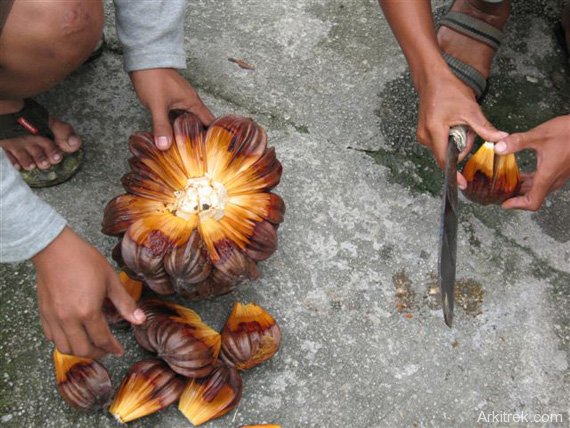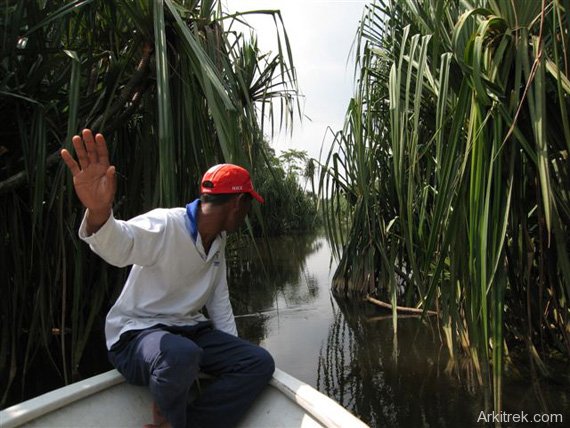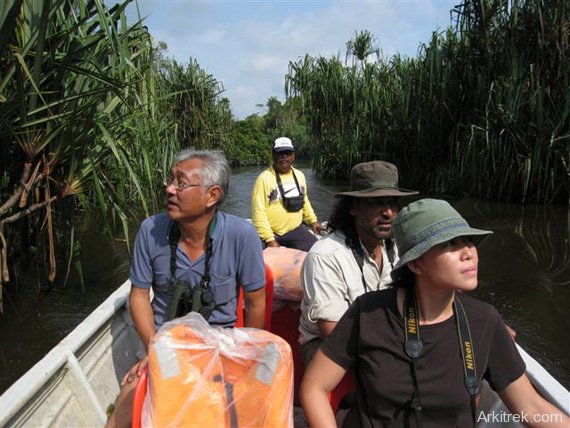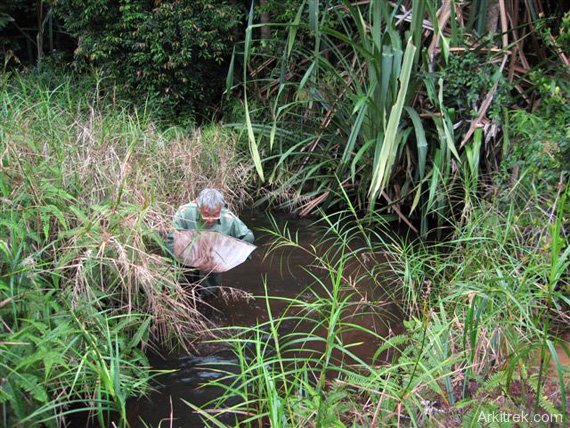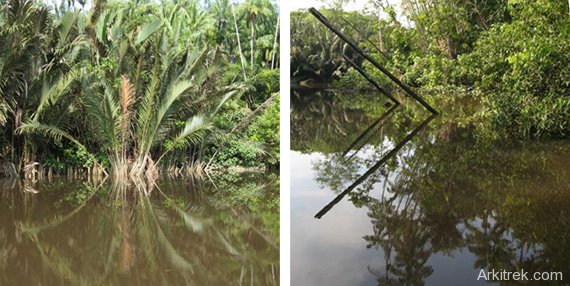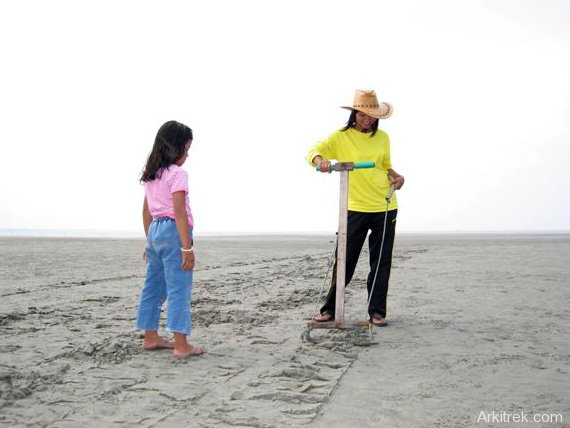Sedili Kecil
He held the mud crab still with his bare feet whilst deftly tying up the claws with a length of pink raffia. Job done, the fisherman tossed his catch into a bucket. On our request the second fisherman sorted us out half a dozen choice crabs and a bargain was done. Our two boats parted company and we left the fishermen to their work.
Sungai Sedili Kecil is not on the tourist track but that’s why I was there as a guest of Wild Asia. Our job was to assess the community based eco-tourism tourism potential of this proposed Ramsar Site.
Back on the river the boat turns off the main channel and noses between aerial roots and under fallen branches. With the noise of the outboard motor muted the mangrove forest sounds come to life – an arhythmic tangle of pops and clacks of bivalves and the cheerful whistle of a mangrove blue flycatcher.
We pause for shore leave and our guide Mahadan (the head of SISEK – Sedili ecotourism committee) grubs around in the mud for some lokan – or clams. Shucked on the spot, only Dennis accepts the offer of seafood as fresh as it comes.
A rare characteristic of Sedili Kecil is that it has preserved intact a transition between intertidal and fresh water swamp forest. As the mangroves fall behind we find a new harvest for our dinner – the sea coconut, or fruit of the nipah palm.
The leaves of this palm are also prized for traditional roofing thatch and the trunks are useful for kelong (fish traps) and can be split and used as floor boards.
I dip my hand into the water and taste it. It’s fresh and there is no dry land in site. Behind the submerged nipah is the inundated swamp forest, here dominated by Barringtonia conoidea, the young leaves of which are traditionally used as a vegetable.
A commotion in the branches attracts Irshad’s attention and we kill the motor. At first I thought it was just a macaque but it turns out to be much more exciting – a white handed gibbon and a first time sighting for me.
Meanwhile Dennis is getting excited about the fish. Plunging his net under a mat of water weed he retreives a handful of tiny flapping species of Betta. Some of the species in this family are endemic to Malaysia and vulnerable to extinction. Sedili may be an important refuge.
Our journey upriver is halted where the open water becomes overgrown with pandanus. This peculiar plant is sometimes known as screw pine after the way the serrated leaf spikes corkscrew off the trunk.
Reluctantly we drift back downstream with the current and I fantasize that the swamp stretches for miles and miles. Unfortunately I’ve looked on google earth and seen the reality of encroaching oil palm plantations.
The river widens and four huge pipes rudely interrupt the scene. Behind them the forest is clear cut for aquaculture ponds. Some houses come into view and with all the mangroves gone the river bank is open to erosion.
We pass a boat fishing for freshwater lobster and shortly after that our friends tying up crabs. They favour the side that is still forested.
Back in a shabby and overpriced motel we contemplate our findings. For me the boat journey was fascinating but it was rather slow paced and with nothing dramatic. It is also surrounded by rather degraded ecosytems. I found it hard to see how Sedili Kecil could be marketed for eco-tourism.
The secret I learned, is in the storytelling and this was why Wild Asia had invited Irshad Mobarak, Langkawi’s best loved naturalist to join us.
“There is certainly a better product here than anything we have in Langkawi” announced Irshad. His enthusiasm had been building all day and what you are reading is part journal and part Irshad’s vision for how to present Sedili Kecil to eco-tourists; a carefully orchestrated journey through specialised ecosytems with diversions into sustainable uses, community interaction, ecology, conservation and of course lunch.
Dennis Yong, best known as an ornitholigist tour guide, took a more pragmatic view. There are no exciting rare birds, no charismatic mammals and the accommodation is crap. Would he bring guests here? Probably not.
Dr Reza Azmi, founder of Wild Asia suggested a compromise, “perhaps what we are looking at here is more environmental education focused?”. Student groups would be less fussy about their accommodation and the story would have an impressionable audience.
Late in the afternoon the sun’s heat is fading and it’s time to visit the beach. Irshad immediately sets off to investigate tidal pools while Dennis and I search for Malaysian Plover.
This shorebird is threatened throughout it’s range by coastal development, particularly just above the high tide line where it scoops a shallow nest out of the sand. We are lucky to see a pair foraging back and forth on the sand, amused by their cartoon-like outstretched head sideways dash after prey.
In our last activity we join some villagers harvesting cockles and take turns learning how to detect buried shellfish by dragging a steel rake through the sand. Our pockets bulging with dinner we walk up the beach accompanied by the cackling hoots of a family of oriental pied hornbills.
If the eco-tourism potential is now clear to me, it may take longer for the locals to catch on. Many would not even consider nature conservation as a respectable means to earn a living. Hopefully by building capacity within the community, starting with young nature guides, the locals can begin to value nature for its own sake. All the props are there; the gradated ecosytems with their specialised plants and wildlife, it just needs insight and enthusiasm to write the plot and direct the cast.
More about Sg. Sedili Kecil from Wetlands International.
Related posts
%RELATEDPOSTS%


